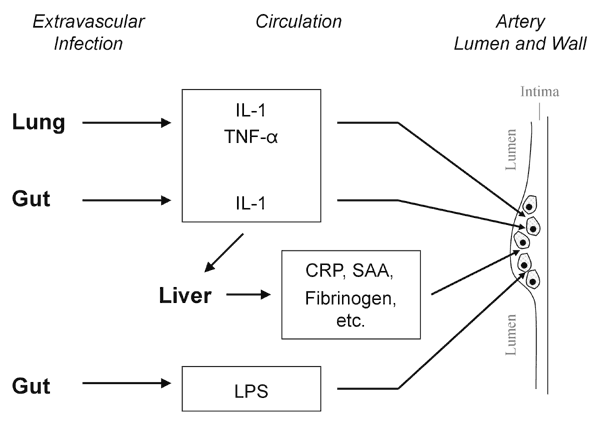Volume 7, Number 5—October 2001
Synopsis
Potential Infectious Etiologies of Atherosclerosis: A Multifactorial Perspective
Figure 1

Figure 1. . "Echo" hypothesis: activation of atheroma-associated cells by bacterial products and cytokines released in response to extravascular infection. a. Extravascular infection stimulates production of inflammatory cytokines, e.g. interleukin-1 (IL-1) and tumor necrosis factor-alpha (TNF-α), that can elicit an echo cytokine response from inflammatory cells in residence at sites of atherogenesis. Circulating microbial products, e.g. endotoxin, can also elicit an echo response at the artery wall. b. Extravascular infection-elicited cytokines stimulate hepatic synthesis of acute-phase reactants. Some factors, e.g. fibrinogen, might influence complicated atheromata formation or arterial thrombosis.
Page created: April 26, 2012
Page updated: April 26, 2012
Page reviewed: April 26, 2012
The conclusions, findings, and opinions expressed by authors contributing to this journal do not necessarily reflect the official position of the U.S. Department of Health and Human Services, the Public Health Service, the Centers for Disease Control and Prevention, or the authors' affiliated institutions. Use of trade names is for identification only and does not imply endorsement by any of the groups named above.